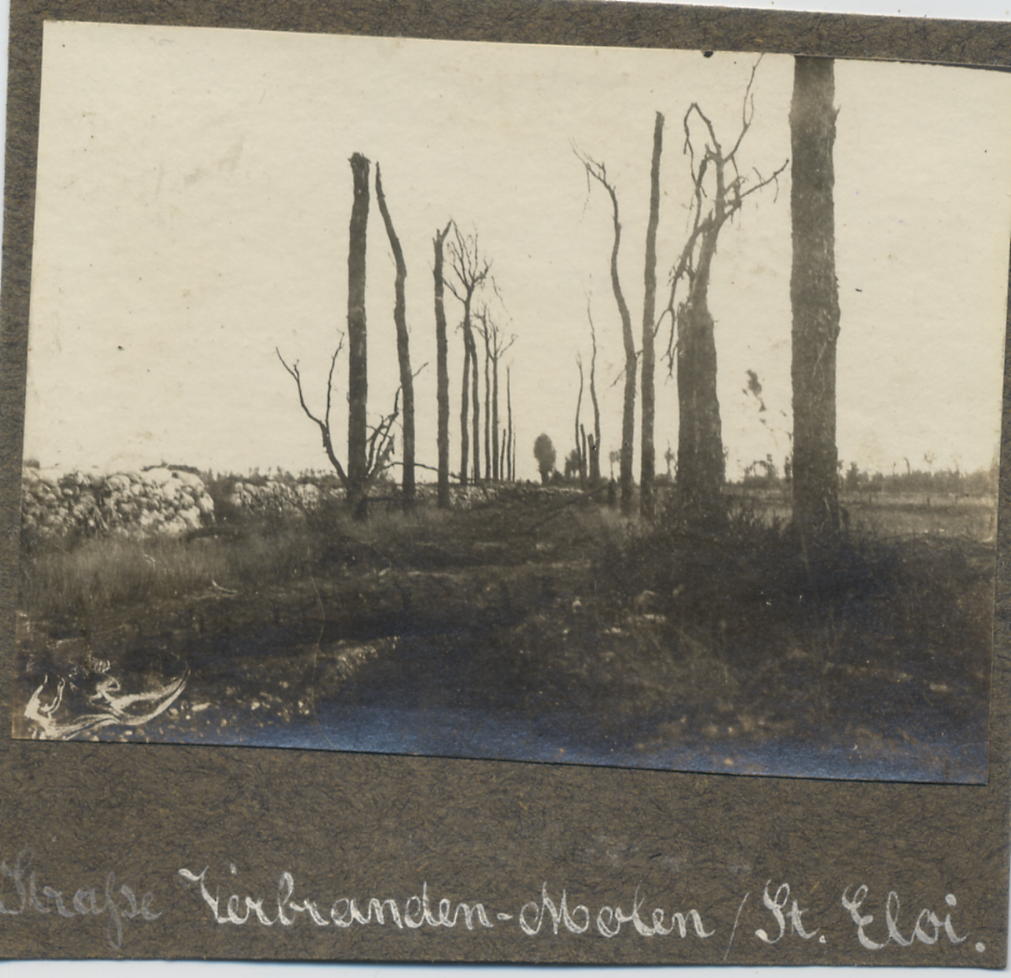
Originally known as Sint Elooiseweg, the road to St. Elooi, this route was cut in half by the digging of the canal but reunited in purpose by the new bridge. Eventually, this name became inappropriate once it was decided that the bridge to Sint Elooi was not to be restored and it obtained the name we know today. Present day Palingbeekstraat is composed of three parallel concrete roadways. The original Sint Elooiseweg was the easternmost of these, on the Hollebeke side.
The soldier who took this photograph was standing with his back to what would become the Palingbeek car park. In the right background of the photo is De Vierlingen, ‘Battle Wood’. To the left, a sand-bagged second line built to resist French incursions in the winter of 1914, then abandoned in spring 1915 after a permanent second line was completed. The trees lining the road have been reduced to stumps by shrapnel shells, air bursting showers of lead balls. These were fired by German artillery when this road was temporarily the German front line, prior to an attack on 13th November 1914.
On 13 November the attack must be continued after artillery preparation, because possession of the dominating hill of Verbranden Molen as an artillery observation post is of extremely high importance for the attack against Ypres. In the morning they start to make the enemy positions Sturmreif (= prepared to be stormed by artillery.) But already after a short time this has to stop in IR 105’s sector because of continual premature explosion of bombs in the tops of the roadside trees along the St Elooi-Verbranden Molen road, putting the troops in the roadside trenches into very high danger and the trees could not be felled in the daytime as they are in full view of the enemy. So IR 105 has to mount the attack without further artillery preparation from its sector. At 1:45 pm, to the right of IR 105, IR 99 attacks and penetrates. In contrast, the attack of IR 105 collapses with heavy bloody losses, because of the enemy position not having been shelled and still being protected by very strong obstacles. The only thing the regiment can contribute, is the support the advance of IR99 with flanking fire.
(…)
15th November 1914
Because our own artillery is still continually prematurely exploding stuff into the tops of the roadside trees, these must be felled before the attack which has been fixed for November 17. So in the night 16/17 the greatest part of the trees is being felled with help from the Pioneers. Also, as preparation for the attack, the hedges in front are cleared.Ernst Glogowski Das Königlich Sächsische 6. Infanterie-Regiment No. 105 [Dresden 1929]